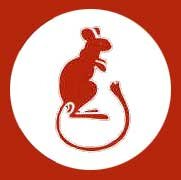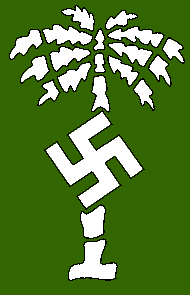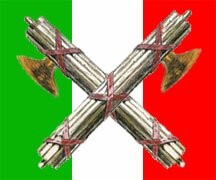Fallschirmjäger-Brigade Ramcke

The last massive airborne invasion launched by Germany was the invasion of the island of Crete (Operation Mercury). Despite the overwhelming success of the invasion, Hitler felt the casualty rate was too high and forbade any further airborne invasions. (Casualties estimates for the Germans ranged from 25-50%). From that point on, German Fallschirmjäger or paratroopers only conducted small airborne/glider assaults or operated as light infantry. Unlike other militaries, the Fallschirmjägers belong to the Luftwaffe or German Airfocre and were not part of the Army or Werhmacht. They were tough, highly trained, and until 1943, most paratroopers were still qualified to jump from aircraft. The parachute division also were issued special weapons such as the FG42 assault rifle, the 2.8cm Panzerbusche 41 AT gun, and the HK101 Sdkfz2 Kleines Kettenfraftrad.
The Ramcke Brigade was originally slotted for the Airborne invasion of Malta but when the invasion was cancelled it was sent to Africa to supplement the Afrika Korps Originally named Fallschirmjäger-Brigade Afrika, the units was renamed after its commander in April 1942, and arrived in North Africa in July, 1942. Among the duties of the Brigade was to provide a quick reaction against the numerous desert raiders (SAS, LRDG, etc.).
The Ramcke Brigade also spearheaded the push for the Suez Canal which stalled at El Alamein. During the Second battle of El Alamein. the brigade covered Rommel's withdrawal and was given up for lost when it became encircled by Commonwealth forces. Despite being cut off, the brigade managed to to turn initial defeat into a moment of complete embarrassment for the British when they captured a convoy without firing a shot on the night of 6/7 November 1942. The Brigade then drove the entire captured convoy back to German lines complete with food, fuel and ammunition meant to supply a Commonwealth Armored Division. The Brigade continued to use the captured vehicles until their eventual withdrawal from North Afrika. Shortly after this amazing accomplishment the brigade was sent to Tunis for rest and the commander, Oberst Hermann-Bernhard Ramcke, was transferred back to Italy. Renamed, Luftwaffenwaffen-Jäger-Brigade 1, the brigade was now commanded by former battalion commander Major Hans Kroh. The brigade then was engaged in in mountain warfare fighting in the rugged terrain of Tunisia until final Axis capitulation.

Kleines Kettnkrad of the Ramcke Brigade (Color enhanced).
Kampfgruppe Menton
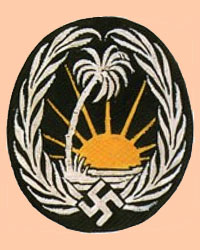
Kampfgruppe Menton (Sonderverband 288, Panzer-Grenadier Regiment -- Afrika)
- Kampfgruppe = Battle Group
- Sonderverband = Special Unit
Sonderverband or Special Unit 288 was formed in Potsdam, Germany on July 1, 1941. The special unit was drawn from units located throughout Germany and also had a special contingent of German personnel who had lived or had served in what is now South West Asia. The unit was created for a special purpose and as such was not organized along the line of a regular Garman brigade. In total the Sonderverband consisted of 7 to 12 companies with each company having a specialized duty.
Part of the unit were highly specialized personnel. Among these were a company comprised of linguists who were fluent is several Arab and Persians dialects, as well as Urdi, Hindi, and Sanskrit. Most of the people in this company had spent time in the areas (Syria, Iraq, Persia, and India) where the unit was to be deployed. Other non-combat companies included a print shop, a water testing unit, and Brandenburg (commando) Company. The Brandenburg company were to infiltrate enemy lines dressed as the enemy and commit acts of sabotage, gather information and cause other types of havoc.
The other companies were more standardized units. This was also the majority of the personnel. All of the combat companies were crossed trained so that personnel could be shifted from one combat company to another if the need arose. The following companies comprised the rest of the unit.
- Infantry Company
- Gibirgjager (Mountain Infantry) Company
- Reconnaissance Company
- Flak (anti-aircraft) Company
- Artillery company with an SP platoon.
- Anti tank gun Company.
- Engineer Company
- Medical Company
The entire unit was motorized using trucks for transportation. The only tracked armored was found in the SP platoon. The reconnaissance company possessed wheeled armored cars.
Sonderverband 288 was raised shortly after a similar group Sonderverband 287 was formed both units were eventually moved to Greece where they waited the anticipated collapse of British in Egypt. Once the collapse happened the units would deploy to Syria and from there to Iraq and eventually India. The units were suppose to incite rebellion in the British colonies and with the aid of the local populations seize oil fields. This was the planned route for a new southern flank against the Soviet Union.
The plan fell apart when the Germans were stopped in Egypt. Sonderverband 287 was then deployed to Yugoslavia in anti-partisan operations and Sonderverband 288 went to North Africa.
At this time Sonderverband 288 left behind the portion that comprised of linguists and the press shop and other special ops units and was renamed Kampfgruppe Menton. The combat group was also split into two battalions of the three companies each to better fulfill the need of the DAK. The first battalion comprised the infantry elements (mountain, light and reconnaissance) and a heavy battalion (mortars, flak, anti-tank) This independent battle groups was attached to the 90 Leichte (light) Division in defense of El Agheila. It later fought with distinction at Bir-Hachem and Tobruk. On October 31, 1942, the unit was re-designated Panzergrenadier Regiment Afrika and attached to 164 Light Division. It remained attached to the 164 fighting in Tunisia until the eventual collapse of the DAK.
Upon its inception the unit was similar to the LRDG but upon being deployed to North Africa the unit never operated in its intended role. While the unit had a few run-ins with the LRDG this was no different than those of other reconnaissance companies. There is little evidence it was given the mission of chasing down and destroying the LRDG.
When arriving in North Africa, the unit was transformed into a panzergrenadier regiment, trading in its trucks for half tracks. Many of the towed anti-tanks guns were replaced with self propelled guns. Among these weapons were a limited number of Marder III Sd.Kfz.139's (also called Panzerjager 38 (t)) armed with captured Russian 7.62 cm AT guns (Pak 36). This gun was capable of defeating any allied armor. The unit also acquired the remaining Panzerjäger I’s which were converted Panzer I tanks armed with a Skoda 47 mm PaK L/43 anti-tank gun in open superstructure. The Skoda was an anti-gun of Czech origin. The official name for the Panzerjager I was: Sd.Kfz.101 (4.7cm PaK(t) (Sf) auf Panzerkampfwagen I Ausf B.
The artillery company came with its platoon of Sturmgeschütz III (StuG III) ausf D (Sd.Kfz 142) which were a rarity in North Africa and proved deadly especially in Tunisia. The StuG III ausf D possessed a short barrel 75mm StuK. 37 L/24 cannon firing a HEAT (High-Explosive Anti-tank) round that proved very effective against most British and American armor. Because of the organization of the German Army at this time, StuG III were considered an infantry support weapon and were part of the Artillery. Later StuG III would perform in the roll of tank destroyers and would also equip anti-tank companies.
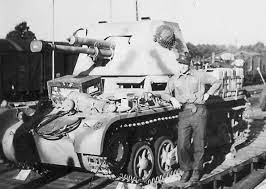
Panzerjager I of Battlegroup Menton at a railhead in North Africa
Schwere Panzer Abteilung 501 and later 504
A case of too little, too late, the 501 Heavy Panzer Detachment was one of the First Tiger I units to see combat against American and British forces. The Tigers were impervious to any tank in North Africa however they suffered from constant mechanical failures. Because of supply difficulties, the 501st never managed to reach full strength, often operating at no more than company strength. By the time the 504th Heavy Panzer Detachment arrived in Tunisia, the 501st was so depleted of men and equipment that it became part of the 504th. Panzer Divisions often were better trained and better equipped than other German Division. Of the Panzer Divisions, units receiving Tiger Tanks were often considered elite. The men in the units were usually highly motivated, and highly trusted. No Panzer Division was completely supplied with Tiger tanks. Only the best were given Tigers and some of the best Divisions only got a handful of Tigers. Within the Panzer Divisions, only the best crews were given Tigers.

A Tiger tank of Abt. 501 meets a camel in Tunisia.
Gestapo
While Rommel insisted that no Waffen SS units be sent to North Africa, he was not able to stop the Gestapo from coming to Libya and Tunisia. While it is not as widely known, the slaughter of Jews also took place in North Africa. A month after Rommel arrived in Tobruk, SS-Standartenführer Walter Rauff arrived. His mission was the elimination of and persecution of Jews and partisans in North Africa and the Middle East (including the British Mandate of Palestine). He was also supposed to court Arab nationalists who were determined to drive the French and British from the area, Many Arabs looked upon the Germans as liberators and not the next occupier. In actuality, however, the German were after the rich oil fields and saw the Arabs as an ends to a means.
The main concentration camps were located near Jado, Tunisia. It is unknown how many Jews died there but it is believed that most probably died from typhoid. But make no mistake, if they had not died from disease, malnutrition and exhaustion, then other methods would have been used. Rauff had been instrumental in the development of mobile gas chambers before coming to Tunisia.
The prisoners in the concentration camps were used to dig trenches, build airports, lay minefields and other difficult and or dangerous jobs. It is difficult to believe that Rommel was not aware of the use of this forced labor. Besides Jews, European citizens, particularly British were also rounded up by the Gestapo, however these usually sent to camps in Europe.
The Gestapo also interrogated prisoners and courted spies among the local population. It is possible that Gestapo Spies in Cairo tipped off the failed raids on Tobruk, Jalo, and Benghazi. While Rommel tried to keep POWs out of the hands of the Gestapo, some high value POWs were undoubtedly turned over to them and most civilian spies would have been turned over. Members of SIG would have been of special interest to the Gestapo.

